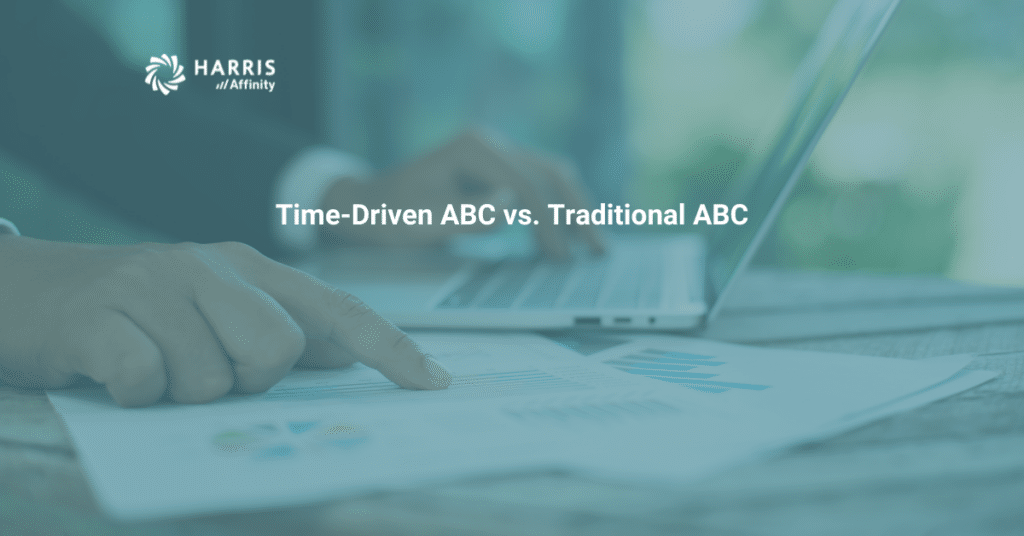Time-Driven Activity-Based Costing is the solution healthcare and hospitals need to create a more accurate view of their cost’s compared to Traditional Activity-Based Costing. In order to create a more in-depth and critical view for financial and operational planning, Time-Driven ABC is essential.
Solutions for Healthcare and Hospital Budgeting Problems
Traditional ABC
Traditional activity-based costing (ABC) has been used in healthcare to assign overhead and other related costs to a patient, on the basis of the activities required to service them. This kind of costing associates certain costs with activities, rather than an even spread. This method distributes costs to the service or patient based on the activities that are required to service them and their consumption of them. Traditional ABC is unable to provide the most precise view of the complex costs associated with serving patients in the healthcare industry.
Traditional ABC does not account for variations and changes, as well the complex situations that can come from a hospital setting. When used in larger operations, generic spreadsheet tools are unable to manage such massive amounts of data. It can take days just to process a month’s worth of data. This method cannot handle the various inputs for each patient, and it does not provide a full view of the real cost of each patient.
Why Time-Driven Activity-Based Costing Will Help Your Organization?
Time-Driven ABC
Time-driven Activity-Based Costing introduces the factor of time to the traditional method, creating a much more precise view. Within healthcare, Time-Driven ABC uses clinical and administrative processes to directly estimate the cost of patient care. Time costing assigns costs to patients based on the required time it takes to complete each activity. This allows for the calculation of more complex items and tasks because the addition of time accounts for the variations in patients and services. This supplies information to organizations so they can determine which activities are beneficial to their margin and change or reduce ones that are unprofitable. Time-Driven ABC provides more accurate costs than traditional ABC.
The Time-Driven ABC method estimates the cost of capacity for each activity by using an estimation of the unit cost of supplying capacity and the time required to perform the activity. This method includes costs of labor, equipment, facilities, and supplies using the premise of time. Specifically, the addition of time helps accurately determine the labor costs associated with each patient.
Time- driven ABC only requires a rough estimate of time and does not need to be precise, and its goal is to get within 5-10% of the actual number. If the numbers are inaccurate, then the model will show that over time and can be adjusted to a more accurate estimation. Since the reporting is ongoing this supports better estimates and more accurate information. This also allows the model to stay current with the organization and account for updates and changes in operating conditions (like changes in efficiency), operating expenses and cost-driver rates.
To estimate, “only two parameters are required: the cost per time unit of supplying resource capacity and the unit times of consumption of resource capacity by products, services, and patients.” This means Time-Driven ABC is able to estimate the time it takes to complete a single unit of an activity, not the entire process, and determine the overhead cost per minute of supplying capacity for each patient.
Using Time-Driven Activity-Based Costing, healthcare organizations will be able to “reliably predict financing needs, inform quality improvement initiatives, and maximize efficiency.”
Activity-Based Costing: Data-Driven Insights for Informed Decision Making
How Time-Driven ABC is Used in Healthcare
Our white paper “Why Time-Driven Activity Based Costing Will Help Your Organization” gives a great example about how the Time-Driven ABC method is used in an emergency room. Using the time-driven activity-based costing method in healthcare allowed the client to account for each patient individually, and gain optimal precision by applying multiple resource intensity factors to the time. This led to the most precise assignment of labor expenses for each patient using time-based activity costing.
The difference between traditional ABC and Time-Driven ABC could be substantial for health organizations. Harris Affinity’s innovative data integration and sophisticated cost methodologies using time factor and intensity weights allow for improved accuracy of labor-related insights and cost variances between each patient. This solution will allow you to combine multiple financial and allocation models that fit the customized needs of the organization, support various financial structures across the entire health system, utilize, blend, and compare multiple allocation methodologies simultaneously, and create unlimited what-if models.
Harris Affinity’s latest innovation adds Time-Driven Activity-Based Costing, a more precise view to Traditional Activity-Based Costing. This new addition of a time factor allows for a more precise measure of complex tasks, which allows for the measure of patient utilizations based on time for healthcare organizations. Adding time-driven ABC to your organization will allow you to allocate labor expenses, facilitate your current costing process, and improve your costing precision.

